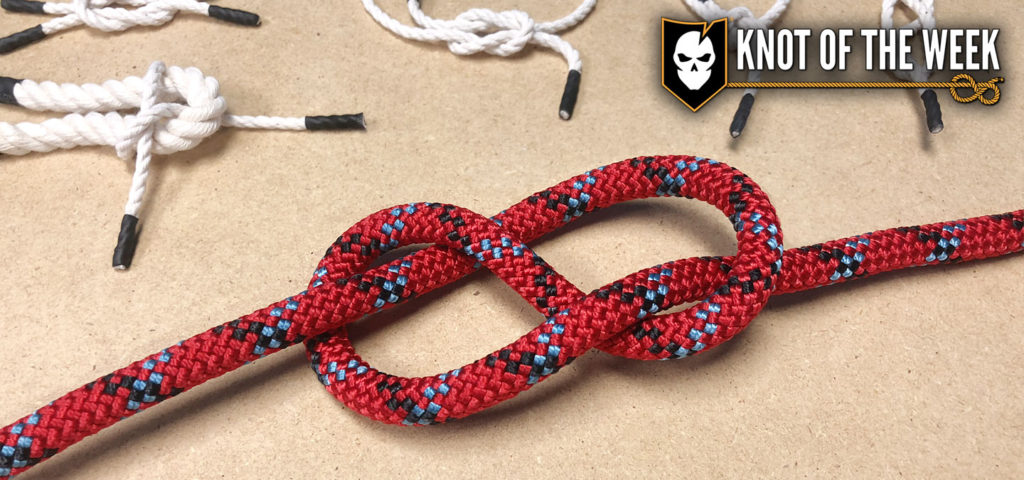The Figure Eight is one of the most useful climbing knots, due to its strength and simplicity. This week, Bryan demonstrates several variations on the Figure Eight, including the Threaded Figure Eight.
In addition, he also ties a miniature version for inclusion on our DIY Knot Board Display.
Figure-Eight Knot » Bends
(Strength: 4/Security: 4/Stability: 3/Difficulty: 1) See below for what these ratings mean.
While the title and rating here is for joining two equal lines together with a Figure 8 bend, it doesn’t take into account the increased security gained with backing up each end.
The Figure-Eight Bend is used to join two lines of equal thickness and can be difficult to untie after being heavily loaded. The pattern created when tying the Figure-Eight gets its name from the “8” that’s made and makes a tied Figure-Eight easy to inspect to ensure it was done so correctly.
Uses for Figure-Eight and Variations
- Figure-Eight (Bend) – Join two equal lengths of rope together in a secure bend
- Figure-Eight on a Bight (Loop) – Creating a loop to connect to an anchor point or for nearly any usage like a lowering a pack, etc.
- Threaded Figure-Eight (Loop) – Tying into a Climbing Harness
Figure-Eight on a Bight / Threaded Figure-Eight
The Figure-Eight on a Bight is ideal for tying into any point along a line to act as an anchor point. If it’s tied in the end of a rope you should always back it up. While this can be tied in the end of a rope, there’s a safety risk if clipping this into a harness via a carabiner during a Lead Climbing situation.
A carabiner can become cross-loaded in a fall and become twisted, producing a weak link. The shock can be caught by the gate of the carabiner, which carries a reduced strength. The kN (Kilo Newton) rating of a carabiner only holds true if the carabiner is loaded appropriately.
Ratings
Strength/Security/Stability/Difficulty
Each knot will be assigned a rating from 1-5 (1 representing the lowest score) based on the following four properties:
Strength – All knots will weaken the strength of a rope, however, there are knots that are stronger than others. The scale here will reflect how strong the rope remains with the specified knot.
Security – The security scale refers to how well the knot will stay tied, and resist coming loose under a normal load.
Stability – Stability refers to how easily the knot will come untied under an abnormal load (i.e. the knot being pulled in a direction it was not intended to) A lower score here represents instability.
Difficulty – The lower the number, the easier a knot is to tie.

